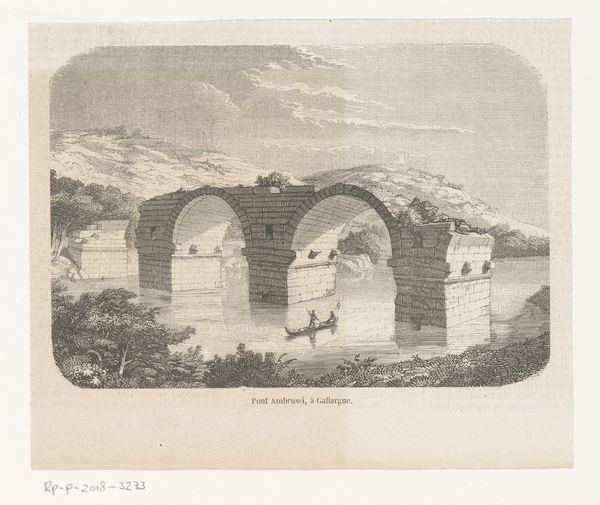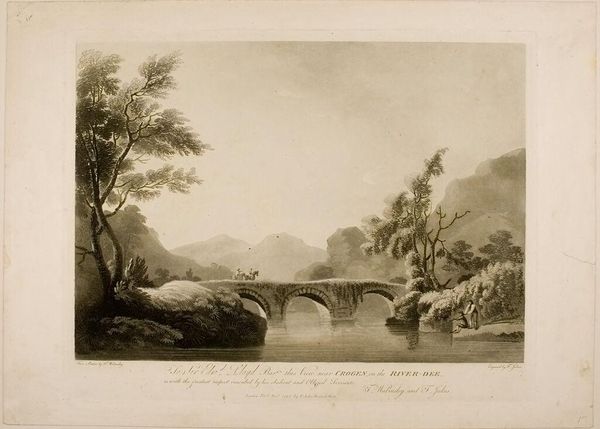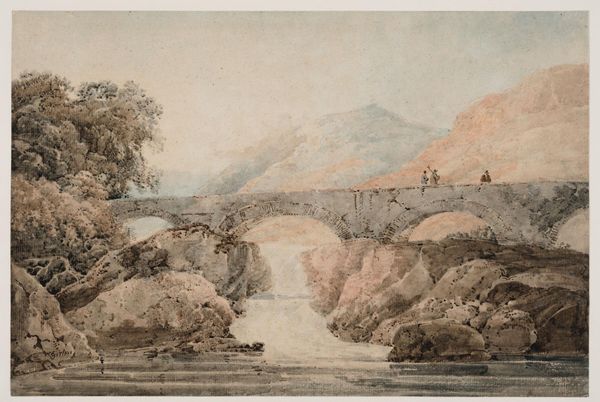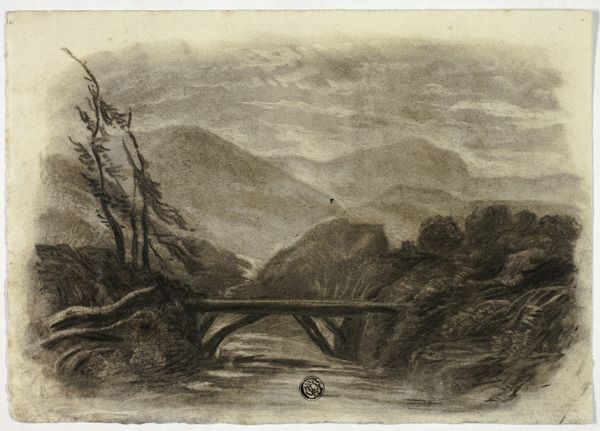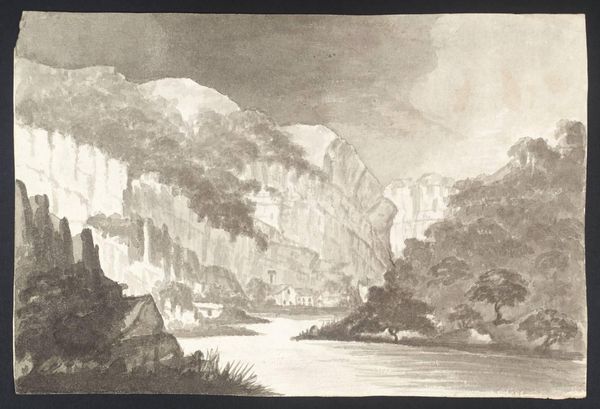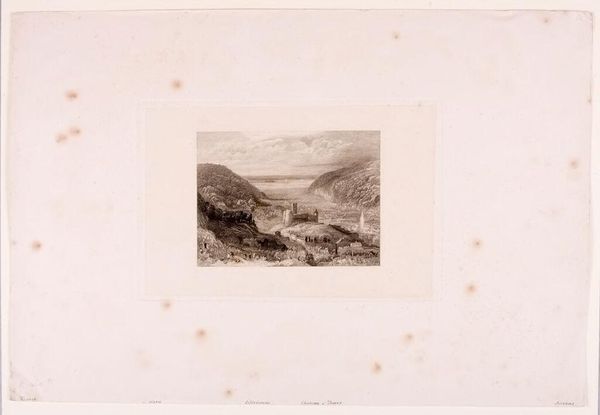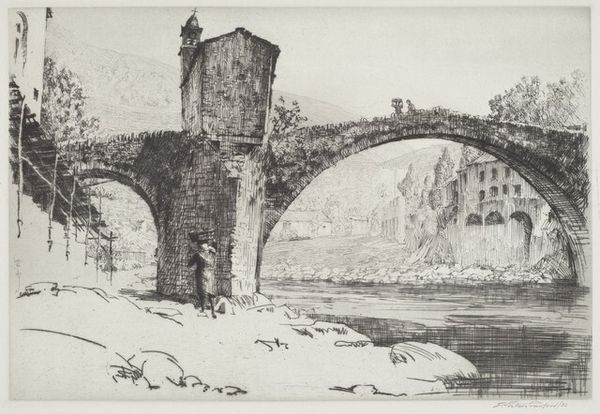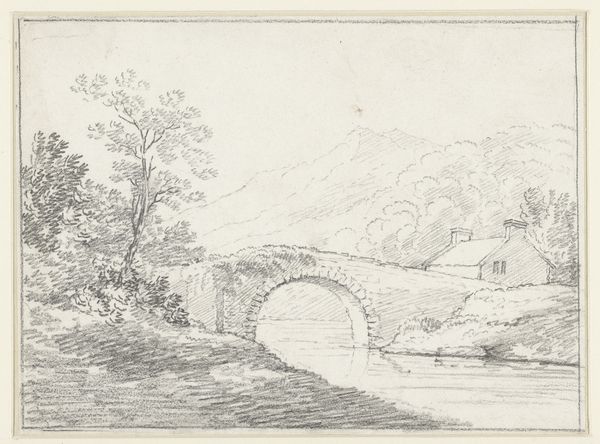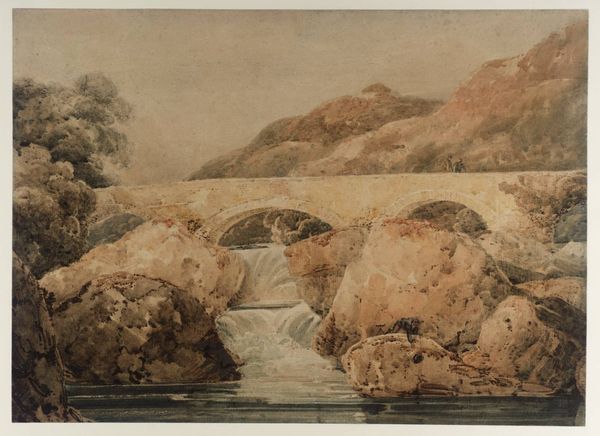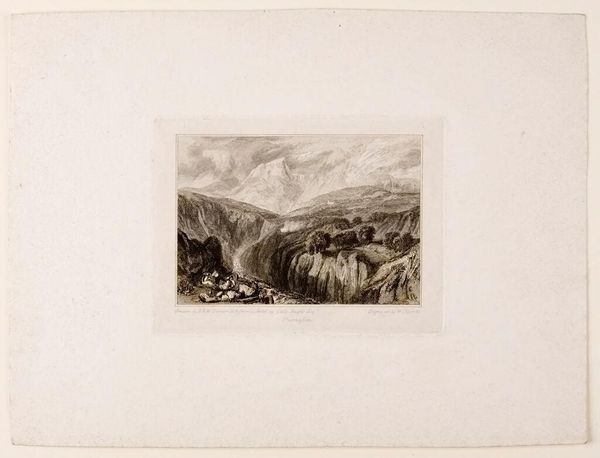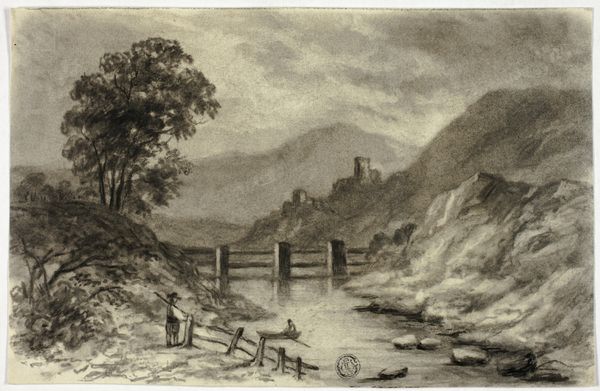
Bridge c. 19th century
Copyright: CC0 1.0
Editor: Here we have W.L. Walton's "Bridge," from the Harvard Art Museums. It's a sepia-toned image, and it feels rather romantic, with the couple strolling across. What do you see in this piece? Curator: I see a constructed landscape, a bridge, that facilitates connection but also signifies division, controlling access across the water. Who gets to cross, and who is excluded? Editor: That's interesting. I hadn't thought about it in terms of access and exclusion. Curator: Consider the historical context. Bridges were vital infrastructure, often symbols of power and control. Who commissioned them, and for whose benefit? Editor: So, you're saying it's not just a pretty landscape. Curator: Exactly. Art is never neutral. It always reflects power dynamics and social structures. Think about how landscapes themselves are constructed and idealized. Editor: I'll definitely look at landscapes differently now. Thanks! Curator: My pleasure. It's about asking critical questions.
Comments
No comments
Be the first to comment and join the conversation on the ultimate creative platform.
